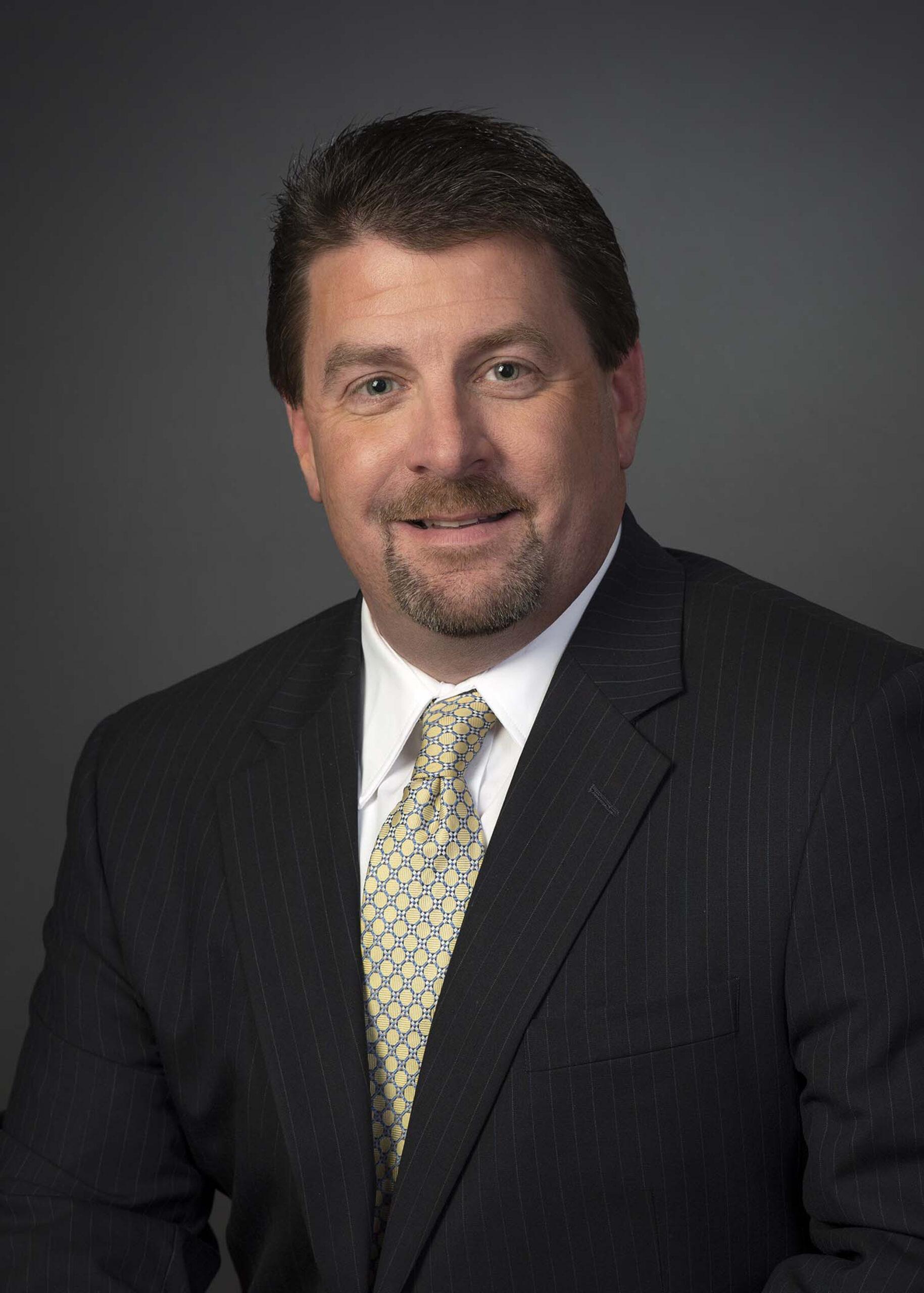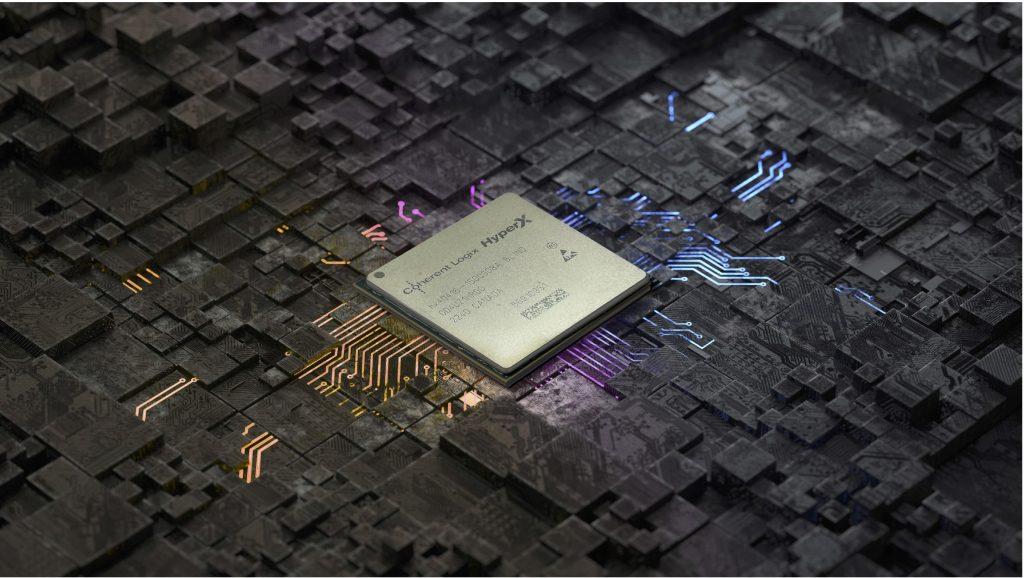
- June 7, 2025 4:41 am
- California

Innovation is a crucial aspect of leadership. Innovative leaders can think creatively, identify opportunities, and develop new ideas to help their organizations grow and stay relevant in a constantly changing world. They can inspire their teams to think outside the box and create new solutions to problems. Thomas D. Longenecker is an innovative leader with the unique ability to strategize at the micro and macro levels. His leadership style, complemented by his extensive finance and operations experience, fosters collaboration among the senior leadership team, which ultimately is spread throughout all verticals of the organization.
As a thoughtful, caring individual, Tom (as Thomas is known adoringly) knows that all children can learn and that their success depends on creating a learning program and environment that meets their unique needs. No two children are the same, and Tom understands and recognizes that customized and personalized learning programs will ensure each child’s future success. With more than twenty-five years of experience in educational leadership and as a father of two, Tom has extensive knowledge of transforming education to be student- and family-focused.
Tom has been with CCA since 2012 and served as chief operations officer before being appointed president and chief executive officer effective July 1, 2020. Through innovation and leveraging technology, Tom is leading the charge to upend education to ensure that every student is successful. He is steadfast in ensuring every child graduates high school with a defined career path, earning a family-sustaining income, and becoming a socially responsible, productive citizen. “The future of our country is dependent on preparing today’s students for the jobs and economy of tomorrow,” says Tom.
As a firm believer in participatory leadership, Tom empowers the leadership team to take ownership of their respective divisions using a team approach. While each individual has skills and expertise in particular areas, working as a team prevents the building of silos and staves off mission creeps.
Without sounding self-aggrandizing, Tom has consistently experienced success because of his solid work ethic at every career stage. Although he stumbled along the way, Tom learned from those setbacks, reassessed each situation, and charted a path to success. “Most of the lessons we learn are from difficult situations; however, it’s what you learn through experience and how you perform on the other side,” he adds.
On A Mission to Enhance Learning
The history of virtual charter schools tells an exciting story. While cyber school may sound like an incredibly modern institution, distance learning originated in the 19th century. Improvements in the United States Postal Service helped correspondence colleges catch on at this time, and cross-country communication became more efficient than ever. At these colleges, instructional materials were distributed through the mail between professors and students, making learning possible even over great distances.
With the advent of the internet in the late 20th century, distance learning became significantly more efficient — communication was near-instantaneous, allowing students and teachers to operate almost synchronously. At the same time, web developers began to create websites and software designed specifically for education, making it easier than ever to access course materials.
Over the last two decades, the power of individual computers has increased 10,000 times over, without substantial boosts in power usage or cost. The room-sized computers of the past have become handheld tablets that fit easily into our backpacks and purses. Since 2003, CCA has led the way in virtual education for Pennsylvania families. The idea of CCA came from seeing students being taught the same information at the same time, regardless of interest or capacity, which prompted the founding trustees to rethink the mission of education.
CCA’s approach to education is to meet kids where they are and personalize the learning process. Rather than expecting all students to learn the same material at the same time at the same rate, CCA assesses each student’s individual educational needs. By incorporating career-mindedness into elementary and secondary education, CCA strives to foster its learner’s interests and passions right from the start.
Using the power of the internet and advanced computer software, CCA can personalize each student’s curriculum to their individual needs. Here, students learn at their own pace with the freedom to progress faster in subjects they love — or spend more time on subjects they haven’t yet grasped.
Offering the Best Learning Experience
CCA’s mission is to deliver a personalized learning experience that engages the entire family and prepares learners to succeed in school and life. Tom’s commitment to bringing CCA’s mission to life rests on the fact that every child, regardless of their background, socioeconomic status, and beliefs, deserves a world-class, high-quality education. The key to achieving this goal is to meet each student’s unique needs.
In Pennsylvania, public cyber charter schools are available to any school-age child who resides in the state. A student’s education is predominately completed via the internet. From completing assignments to taking tests to submitting homework and projects, CCA’s learning management system, edio, is a one-stop-shop for students to learn, engage with teachers and classmates, and turn in work. Although virtually everything involving CCA is online, they recognize that face-to-face interaction and camaraderie are necessary and desired by students and families. CCA takes learning a step further by offering in-person field trips, clubs, and camps.
As a K through 12 public cyber charter school in Pennsylvania, CCA – a public school of choice – is open to any school-age child who resides in Pennsylvania. Under state law, families who choose to send their child to a public cyber charter school do not have to pay tuition; the child’s tuition is paid for by their school district of residence. CCA provides everything to a student that is needed to complete their online education, including a laptop, second monitor, printer, mouse, headsets, all textbooks and curriculum materials for every class, and financial assistance with technology costs (home internet, printer ink, paper, etc.).
What makes CCA attractive to both students and families is the personalized, flexible, high-quality programs. Through synchronous and asynchronous learning, families are able to tailor their child’s learning program to capitalize on their strengths while at the same time remediating and improving their so-called weaknesses. Every child can learn, and families are given the tools to make learning fun and engaging for their child.
Families know what is best for their child’s education, and CCA partners with families to provide them with the framework and pathways to successfully complete an online public education. Some families like a hands-off approach, some families like to be guided through the process, and some families like a mix of both; at CCA families are in full control of their child’s educational program from the time of day to complete schoolwork to where schoolwork will be completed. CCA is 100 percent geared toward meeting the needs of each individual student, one student at a time.
Serving Every Student
At CCA, students and families receive unmatched and best-in-class support. From one-on-one learning sessions with teachers to tutoring to evening support, CCA meets students where they are academically. They also swap out learning materials and books based on a family’s beliefs and implement lesson variants to accommodate a student’s learning style.
CCA also works closely with families of students with disabilities to create programs that allow students to grow personally and academically. Through in-house aids, state-of-the-art software, and age- and school-appropriate materials, students with disabilities can take full advantage of an online education.
Although CCA has grown to more than 25,000 students, Tom’s leadership style enables and encourages staff to assimilate into CCA’s student- and family-focused culture of delivering personalized education to each student. Regardless of how much CCA’s enrollment increases, Tom remains committed to serving every student, one student at a time.
Under Tom’s leadership, CCA launched its own in-house, custom-designed learning management system that is user-friendly, easy to navigate, and customizable for students and families. Known as edio, the academy’s proprietary learning management system was created with input from students, families, teachers, content specialists, and administrators.
In addition to the internet, CCA leverages laptops, external monitors, printers, an extensive network infrastructure, and a large variety of software to deliver online education to students. In addition, CCAis in the concept phase of implementing and leveraging artificial intelligence (AI) for students and teachers. This will lead to a more enhanced personalized learning program and additional tools for teachers to assist students.
Building A Bright Future
CCA’s students and families are the shining example of CCA’s success. Through their proprietary, user-friendly learning management system, edio, students are challenged academically and can regroup and repeat lessons, assignments, and assessments. “School is about learning, and school is where students should be allowed to make mistakes and try again. Learning takes place when students discover their mastery of concepts, and the bright light shines when they get it,” elucidates Tom. “Each year, thousands of students successfully complete their learning program and are promoted to the next grade or reach the end of their secondary education and receive their high school diploma.” Students, families, and staff join together to celebrate these momentous occasions and congratulate students for their success. Year after year, excluding graduates, more than 94 percent of students and families return to CCA because of their learning programs and their caring and compassionate staff … How School Should Work!
CCA partners with businesses and organizations across Pennsylvania to provide students with hands-on, on-the-job training. From construction to emergency medical services to advanced technology, CCA students are afforded ample opportunities to secure credentials and certifications in a variety of industries. Employers embrace these partnerships because students gain real-world experience and learn tricks of the trade, thereby preparing them to enter the workforce after graduation. Many students also pursue postsecondary education pathways based on the field in which they are interested, and the education and training required. CCA’s goal is to give every student sufficient opportunity to explore a variety of careers.
CCA has achieved much and has a great deal to celebrate. Tom’s vision and steady hand have paved the way for CCA to become the premier, most sought-after public cyber charter school in Pennsylvania. With enrollment nearly tripling in three years, CCA has become the leader in online education. CCA’s student- and family-focused approach has attracted thousands of families. Through word-of-mouth promotion by families, the CCA community has become a household name across the state. Tom’s continued leadership and innovative style pushed the envelope by making CCA a school like no other.
Tom has charged the team with the task of building an artificial intelligence (AI) proof of concept for the benefit of students and teachers, as well as devising a strategy to share CCA’s expertise, learning management system, and courses with other schools. While CCA continues to build upon its success with its students and families, Tom’s vision is to partner with other schools to provide every child with access to wide-ranging learning opportunities complemented by a high-quality, customized, flexible education.

The Unique Solutions
The company offers powerful Systems on Chips (SoCs) and a software suite for creating customized solutions. And the current flagship is HyperX Midnight, a radiation-hardened supercomputer class SoC designed for use in LEO, MEO, and GEO (low-, middle-, and geosynchronous earth orbit) satellites.
HyperX Midnight, soon after its release, became the most advanced space processor available, with roughly four times the computing throughput at half the power demand of competitive chips.
“This is a significant step, as performance and power consumption control the magnitude of a satellite. We put enormous performance in a small package with low power obligations, so our customers can use much smaller satellite busses (chassis) which conserves millions in launch budgets,” says Walt. Another key feature of Coherent’s HyperX multi-chip modules compared to its competitors is that its chips are C-programmable and use familiar tools and debugging processes. “The solutions can be built on our chip in about 6 months whereas competitive FPGA offerings usually require 24 months of development time using complex hardware development languages and a very difficult process called timing closure,” he adds.
Coherent Logix’s SoCs are also completely reprogrammable, even in space, and can modify tasks in less than 50ns (nanoseconds). These two elements combine to create a huge advantage. Coherent Logix can make four products in the time our competitors take to build just one, and we can continuously enhance those products even if they are in orbit around the Earth.
These attributes herald back to Coherent Logix’s patented invention: the HyperX fabric. And this fabric is common to all Coherent Logix’ chips – both Space-qualified and terrestrial – so these advantages are available whether users are building a satellite, 5G cellular, secure networks, AI platforms, or 8K video encoders. Coherent Logix has served the Space 2.0 and Defense markets for 15 years. High-performance computing (HPC) with low power draw, on-orbit programmability, and ease of modular multimodal MCM design are the keys to success in these markets according to Walt.
The Leader who Makes the Difference
Walt Gall, Ph.D. serves as CEO on Coherent Logix’s executive management team. He is a business leader who builds world-class AI teams, products, and strategic partnerships for top-tier start-ups (Saffron, Intel acquisition) and large corporations (Amazon Devices, Meta (formerly FB).
As CEO of Coherent Logix, the leader in low-power, high-performance C- programmable processors for the embedded systems market, he recently helped guide the company through a funding initiative that raised $85 million.
Under Walt’s leadership, in early 2023 Coherent Logix launched HyperX Midnight, the world’s most advanced space processor, with roughly four times the computing throughput at half the power demand of competitive chips. Coherent Logix is currently in its fourth generation of HyperX processors for Space 2.0 and Defense, Connected Devices, and Media & Communications industries. The company has been granted more than 375 patents and 125 patents are pending.
Over the past decade, Walt has held various leadership roles on executive teams, including Amazon Alexa AI, Meta’s AR/VR and AI divisions, and Intel AI, with responsibilities for annual operational planning, developing a 3-year strategy, and managing more than $500M R&D and production budgets. He led product launches on conversational AI voice assistants on industry-leading consumer and social media devices with cloud-to-edge embedded applications and the development of several enterprise decision-support AI/IOT solutions in wellness, health, hi-tech, and insurance sectors.
Walt’s leadership style is centered on the customer and making data-informed, timely decisions. This customer-centric team approach is critical as the company scales its products and continues to expand its channel partnerships. “I’m referring to our direct customers and strategic partners, our leadership team and employees, and our Board of Directors,” he adds. “We have a collective interest in growing revenue and partnering on developing and commercializing products that have a meaningful impact on society.”
Armed with this mindset, Walt and the rest of the leadership team have skillfully guided Coherent Logix into hypergrowth markets: Space 2.0, cybersecurity, connected devices, media and communications.

Towards the Future
Coherent Logix is adding a cloud-based capability for new customers, universities, and the Maker/open-source community to work with their development tools and hardware. With older von Neumann microprocessor architecture designs and today’s programmable hardware, the software development process is so tedious that it can take 24-36 months for a customer to develop a solution e.g., a WiFi router. Coherent Logix microprocessors, however, have C-programmability and use standard software development processes. They also offer a cycle-accurate simulation platform. These advantages enable Coherent Logix to build solutions in just six months and continue to reprogram or reconfigure as needed to support their product and customer roadmaps with new software-defined functions or as standards evolve. This, combined with the hardware/software co-design process the company uses to build their System on Chips (SoCs), brings the power of digital transformation to the design and use of digital processors – amplifying both the pace of innovation and the competitive advantages of Coherent Logix.
For the near future, Walt is striving towards building highly functioning, distributed teams to bring the most disruptive products to market he has worked on, i.e., a new class of low-power, reprogrammable, high-performance computing devices. Coherent Logix is enabling customers to “redefine hardware as software” (which is also the company’s tagline) to meet the market demand for the flexibility, extensibility, and scalability of software-defined hardware systems and their small SWaP requirements, ranging from space satellites to consumer devices. Coherent Logix’s HyperX architecture provides a paradigm shift in hardware-software co-design from embedded systems to the cloud and delivers a more cost-effective and scalable software-defined device strategy. With its compute and memory co-localized, an event-oriented, parallel processing fabric, low power profile, and C-programmability, this has a 2-4x improvement in the time it takes to develop and launch products. This multi-faceted value proposition extends product customer lifetime value economic models, increasing the ROI for its ODM and OEM partners and customers. Accomplishing these product revenue growths and customer-centric goals will lead naturally to the longer-term goal of positioning Coherent Logix for a successful market exit for its shareholders.
“The future requires low-power, high performance computing for next generation connected devices – it will be everywhere we find a sensor, a camera, a robot, or smart device. As large as the Space 2.0 revolution is, the terrestrial edge and embedded devices will eclipse it by orders of magnitude,” concludes Walt. “We must be as efficient with power as possible. It has a cost to our planet to produce, and it turns into heat when you use it. If we want to preserve our planet, smart everything must become smart, efficient everything.”

" School is about learning, and school is where students should be allowed to make mistakes and try again. Learning takes place when students discover their mastery of concepts, and the bright light shines when they get it. "
Thomas D. Longenecker
President and CEO